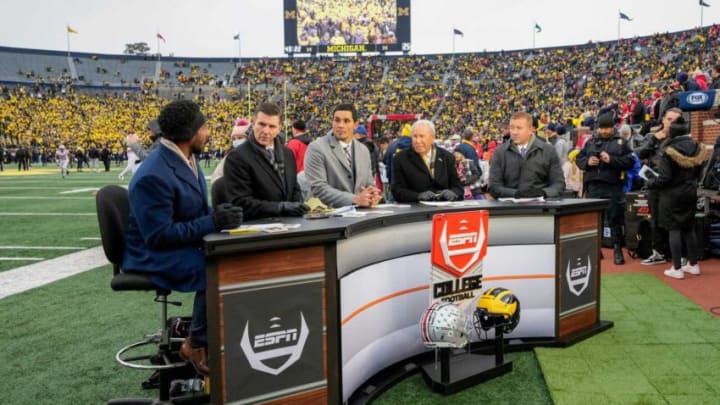College Football is going through a sorting out that started years ago and will not end soon, or ever. It will never be finished because when structures are re-formed, they will always be behind the curve of change.
There are many opinions about what will happen in the next several years. It is hard to understand how anyone can profess to be sure what will transpire. In a general, but all-encompassing sense, it can be predicted the path to seeing the future is to follow the money.
In a wide range of value, college teams are more than anything brands. The immense popularity of college football means media partners are willing to pay high-dollar for high value. The Big Ten and the SEC brands have the highest value so those conference schools reap the highest rewards. That is somewhat less true for the ACC and the Big 12 conferences. Then there is the Pac-12 floundering through failed broadcast and streaming deals, not because of markets, but because of not enough eyeballs.
The Pac-12’s demise shows the Power Five era is over. What is following is a Power Two, with the ACC and the Big 12 unlikely to catch up, even if Power Five morphs into Power Four. No one knows what alignment will bring over the next 5-10 years. The best hint today comes from the Big 12 expansion that added Houston, UCF, Cincinnati and BYU. Houston, UCF and Cincinnati smartly chased more dollars rather than hanging in the AAC where a conference championship in 2024 would have all but guaranteed a CFB Playoff spot.
The AAC filled in by raiding Conference USA, adding UTSA, Charlotte, Florida Atlantic, North Texas, Rice and UAB.
Close observers will notice a pattern here. Across college football, those that can (except for Notre Dame) are chasing opportunities for more media dollars.
In an appeal he had made earlier, AAC Commissioner Mike Aresco recently renewed his call to abolish the Power Five designation. Aresco made some good points, including also wanting the Group of Five designation to be abolished. Aresco said,
"It is troubling to see media-manufactured labels, confirmed by college sports leadership, which do not reflect the reality of college sports going forward. This creates a divide at five that should not exist and creates harmful effects. Documents have recently come to light that describe a P5 legislative initiative around NIL that has not been shared with the wider membership …These five conferences do not speak for all of college athletics. The Power Five and Group of Five labels should be discarded and confined to collegiate history. There are 10 FBS conferences, some more successful than others, but all sharing similar goals, experiencing similar challenges and competing successfully against each other."
College Football Will Change
Aresco is more right than wrong. College football needs structural reform. It will at some point get it, but it will not and in fact cannot meet the needs of 10 conferences and 130-plus teams.
Structure will not change that college football has always had haves and have-nots. It always will, because, unlike the NFL in which parity is good business, college football programs will always aspire to an upper tier, though only the deepest-pocket programs can truly compete. For many reasons, not the least of which is the disparity in operating budgets, the majority of teams will never gain a secure standing in an upper tier.
What could well happen has been talked about for years. At some point, 48-64 college football programs will gain total autonomy from the NCAA and the rest of the FBS.
When it happens, there will be benefits to the ‘upper’ group. The overall game of college football may not suffer, but in such a demarcation some things may be lost. That is the price for progress.
